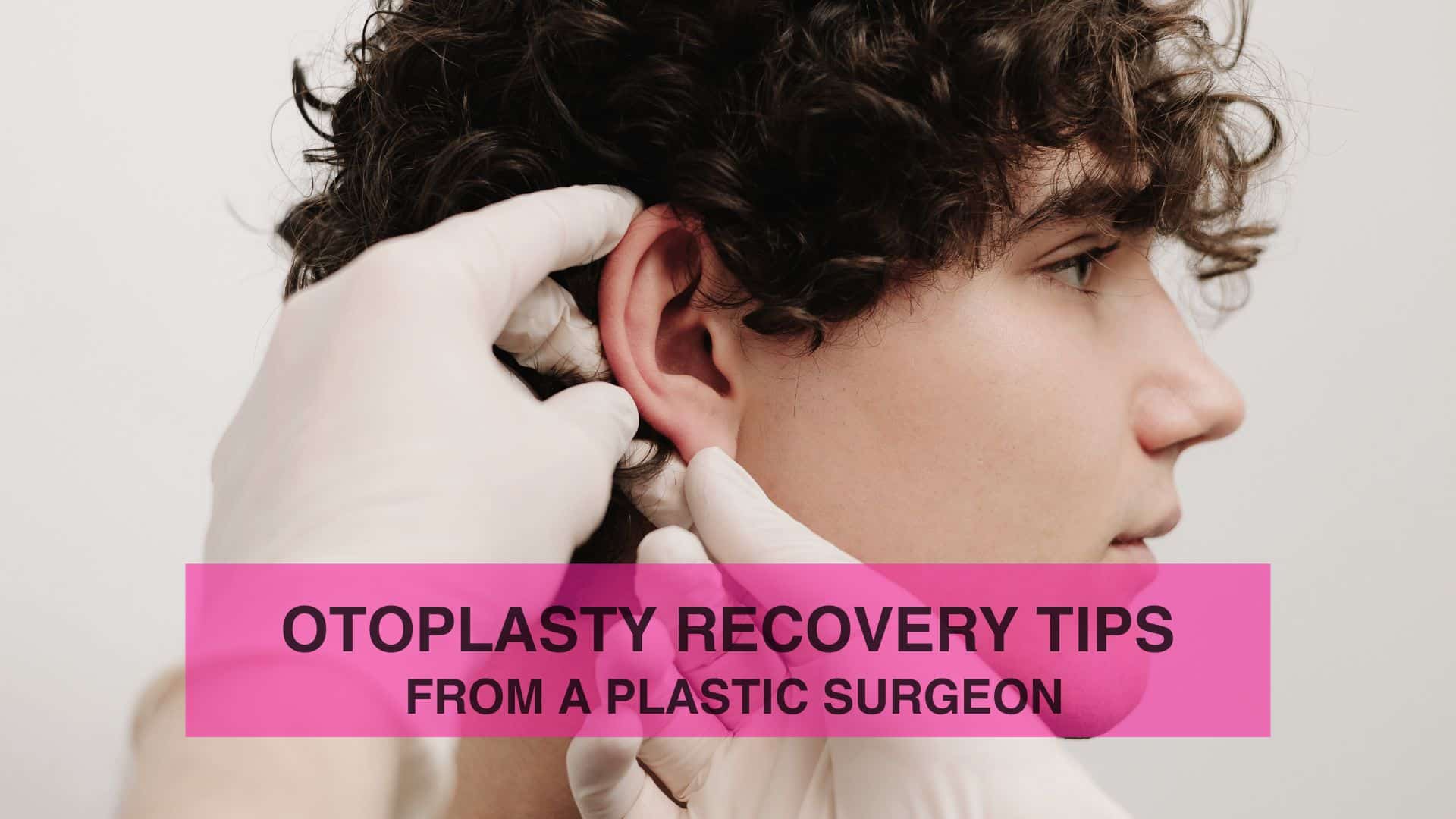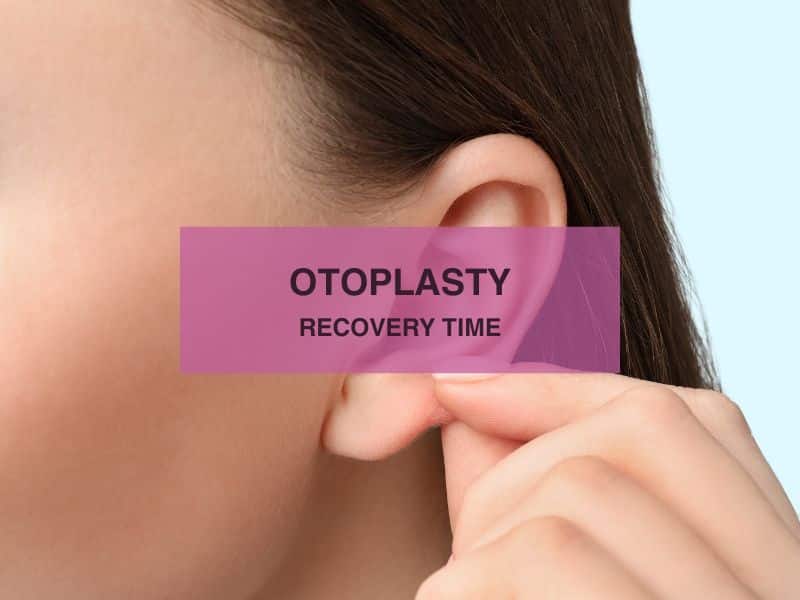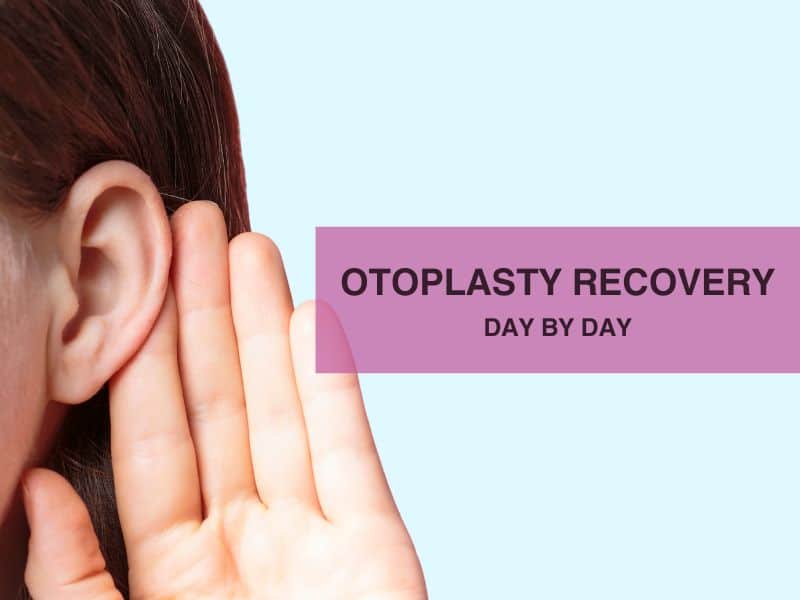Otoplasty Recovery Tips From a Plastic Surgeon
Written by: Dr. Dahlia Rice. Posted in: Blog

Otoplasty recovery can feel intimidating, but it is often much smoother than patients expect. Many fear the discomfort or worry about scarring and residual swelling.
Board-certified plastic surgeon Dr. Dahlia Rice ensures that her patients understand what to expect before undergoing the surgery. With proper care, the otoplasty recovery process is manageable, and most patients achieve great results.
Table of Contents
ToggleOtoplasty Recovery Tips
For most patients, the natural progression of healing means that otoplasty recovery day by day gets better and better. Still, this can only happen when you prepare well ahead of time. Here are some tips to get you started. Of course, you should always consult directly with your plastic surgeon for detailed recommendations.
Start preparing your recovery space now.
To make your otoplasty recovery more comfortable, plan ahead. Create a calm, clean space where you can rest during the first few days post-surgery. Stock up on essentials like medications, pillows, and peaceful activities.
Having everything ready will make your healing process smoother. It’s also a good idea to keep a comfortable chair or bed for resting with your head elevated.
 Know what to expect during the recovery process.
Know what to expect during the recovery process.
Expect some swelling and mild discomfort after your cosmetic ear surgery. The first few days are the most critical for your recovery. You may feel some tightness or soreness around your ears. Most of this discomfort can be managed with pain medication. Keeping your head cool and elevated will minimize swelling and promote faster healing.
Talk to your surgeon about otoplasty scar reduction tips.
One of the main concerns after otoplasty surgery is the potential for noticeable otoplasty scars. Dr. Rice will discuss scar-reducing techniques that can help minimize the appearance of surgical incisions.
Silicone gel sheets, massage, and sunscreen can all be beneficial in the healing process. The best otoplasty surgeons also use techniques that place the incisions in less visible areas, helping scars fade more effectively.
Don’t try to do too much as you heal.
While it might be tempting to resume normal activities soon after surgery, it’s important to take things slow. Your body needs time to heal after ear pinning surgery or any otoplasty procedure. Overexerting yourself can lead to complications, extended swelling, or even delayed healing.
Avoid strenuous physical activity for several weeks after surgery. Instead, focus on rest, eating a healthy diet, and keeping your head elevated to encourage a successful recovery.
Pain medication can help with soreness.
After your otoplasty procedure, it’s normal to experience some soreness or mild pain. Your plastic surgeon will likely prescribe pain medication to help manage any discomfort. Make sure to take your pain medication exactly as prescribed to avoid severe pain.
If you feel the need for additional pain management, talk to your healthcare provider. Wearing your otoplasty recovery headband or a light compression bandage can sometimes help with pain and swelling as well.
Plan on having someone help you at home post-surgery.
In the first few days after your ear surgery, it’s helpful to have someone with you at home. The recovery period can be challenging as you go through the body’s healing process. Having someone to assist with daily tasks, like preparing meals or helping with movement, can ensure a smoother recovery.
Otoplasty Recovery & Procedure FAQs
How much does otoplasty cost?
The cost of otoplasty can vary depending on various factors, such as the surgeon’s experience, the techniques used, and your location. It’s important to schedule a consultation with your otoplasty surgeon to discuss the exact cost of your procedure.
While some patients may be concerned about otoplasty cost, it’s worth noting that the benefits of this cosmetic procedure can be life-changing. Financing options may also be available to help manage the expenses.
What are the common techniques used during otoplasty?
Otoplasty techniques vary depending on the patient’s needs and desired results. One of the most common techniques used is the ear pinning procedure, which repositions the ears closer to the head for a more natural appearance.
Another technique involves reshaping the ear cartilage to improve the ear’s shape. Your plastic surgeon will recommend the best technique based on your specific concerns and natural ear shape.
 How can I avoid noticeable otoplasty scars?
How can I avoid noticeable otoplasty scars?
One of the main concerns after otoplasty is the potential for noticeable otoplasty scars. To minimize scarring, follow your surgeon’s aftercare instructions closely.
Keeping your head elevated, avoiding excessive movement, and using silicone gel sheets can all help reduce scarring. Patience is key, as scars tend to fade with time.
What if I have more questions about otoplasty?
If you have concerns about your otoplasty recovery time or the surgical process itself, it is essential to discuss them with your plastic surgeon. They can provide personalized advice based on your situation.
Schedule a Consultation with Dr. Rice
To learn more about the otoplasty surgical procedure, recovery, and your candidacy for surgery, please contact us today. We would be happy to set up a consultation appointment for you with board-certified plastic surgeon Dr. Dahlia Rice.
 Know what to expect during the recovery process.
Know what to expect during the recovery process. How can I avoid noticeable otoplasty scars?
How can I avoid noticeable otoplasty scars?